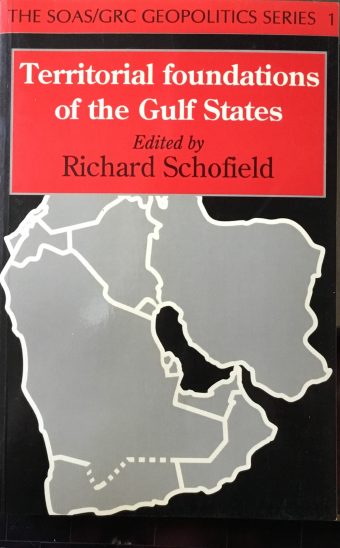Territorial Foundations of The Gulf States.
Schofield, Richard.
Synopsis
A comprehensive treatment of a crucial set of geopolitical issues, “Territorial Foundations of the Gulf States” provides a reading source for all who seek an understanding of a region where political developments are observed with great care and some trepidation by the rest of the world. Based on analysis by leading researchers, the book is an English-language study dealing collectively with the origins and contemporary status of land and maritime boundaries in the Gulf and Arabian Peninsula. The August 1990 Iraqi invasion of Kuwait was the gravest challenge yet posed to the system of small states established by Britain during its stay as a protecting power along the western Gulf littoral. Immediately, questions were raised about the origins of these tiny emirates: how had this territorial framework evolved?; what was its “raison d’etre”?; how capable was this framework of withstanding serious internal and external upheaval such as that caused by the Iraqi invasion? This book reviews these and related concerns from a variety of informed perspectives: those of the boundary-maker himself, the international lawyer, the oil economist, and the political and historical geographer. The origins of the region’s framework of state territory are scrutinized, as is the region’s borders and the contemporary disputes over their status. The period following the Gulf War has witnessed an increase in Arabian territorial disputes. Some are new, such as Saudi-Qatar, but most are established cyclical affairs which have now dramatically re-erupted. Although a complete explanation for these developments is premature, they have occurred as states in the region have been making clear moves to finalize the framework of Arabian state territory – only the Saudi/Yemen border remains indeterminate, albeit the subject of current negotiations. The book begins with a major scene-setting chapter by Richard Schofield. This is followed by chapters containing insights into the relationship between territory and indigenous notions of sovereignty, Britain’s role in drawing Arabian territorial limits (including a contribution from someone who drew up most of its boundaries), Iraq-Kuwait disputes in particular, maritime boundaries, the hydrocarbon dimension of the issues, and concepts of shared political space. With many newly-drawn maps based on original research, this volume provides a comprehensive reader on an issue that plays a dominant part in the regional geopolitics of the Gulf and Arabian Peninsula. It aims to be a reading source for the policy specialist and is intended for students and researchers in international relations, geopolitics and Arab affairs






